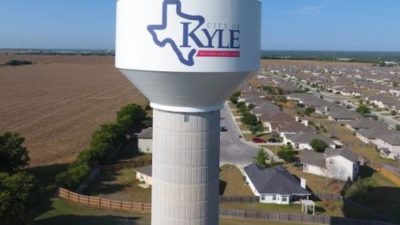As severe drought grips Central Texas and much of the state, the Lower Colorado River Authority has determined that no Highland Lakes water will be available for the second growing season for LCRA agricultural customers in the lower Colorado River basin this year.
“This is a serious drought,” said John Hofmann, LCRA executive vice president of Water. “The majority of the Hill Country has only received between 5 and 10 inches of rain since October, well below average, and the amount of water flowing into the Highland Lakes from January through June is the lowest on record for that six-month period.”
According to the U.S. Drought Monitor, all of the Hill Country watershed that feeds the Highland Lakes is considered to be in extreme drought.
Based on declining lake levels and the water cutoff to interruptible customers, LCRA now has entered drought response Stage 1 under its Firm Customer Drought Contingency Plan and is requesting firm customers such as municipalities and industries to voluntarily reduce their water use by 5%. Each firm customer has its own drought contingency plan that will determine whether to impose additional restrictions on end users such as residences and businesses.
“We have plenty of drinking water supplies available in the Highland Lakes, but we need to start tapping the brakes on water use because we don’t know when this drought will end,” Hofmann said. “Last week’s scattered showers were welcome, but weren’t enough to do much good in terms of water supply. We have been extremely hot and dry since late last year, which means evaporation is up and customers are using more water. Those factors, combined with the scarce amount of water flowing into the Highland Lakes since last fall, have caused lake levels to drop.’’
Even with these drought response actions, levels in lakes Buchanan and Travis, the two water supply reservoirs in the Highland Lakes, are expected to continue to decline throughout the summer. The lakes were designed to fluctuate by capturing water during rainy times and holding it for use during drier times such as these.
LCRA said it will continue to provide water from the first season allocation for interruptible customers finishing up their first crop of the year.
“This is how the Water Management Plan was designed to work,” Hofmann said. “It allows LCRA to react quickly to changing conditions. In the past, we determined water availability at the beginning of the year that applied to both growing seasons. Now we make the determination for the second growing in the middle of the year, closer to the start of the second season. This approach better protects water supplies for cities and industries.”





